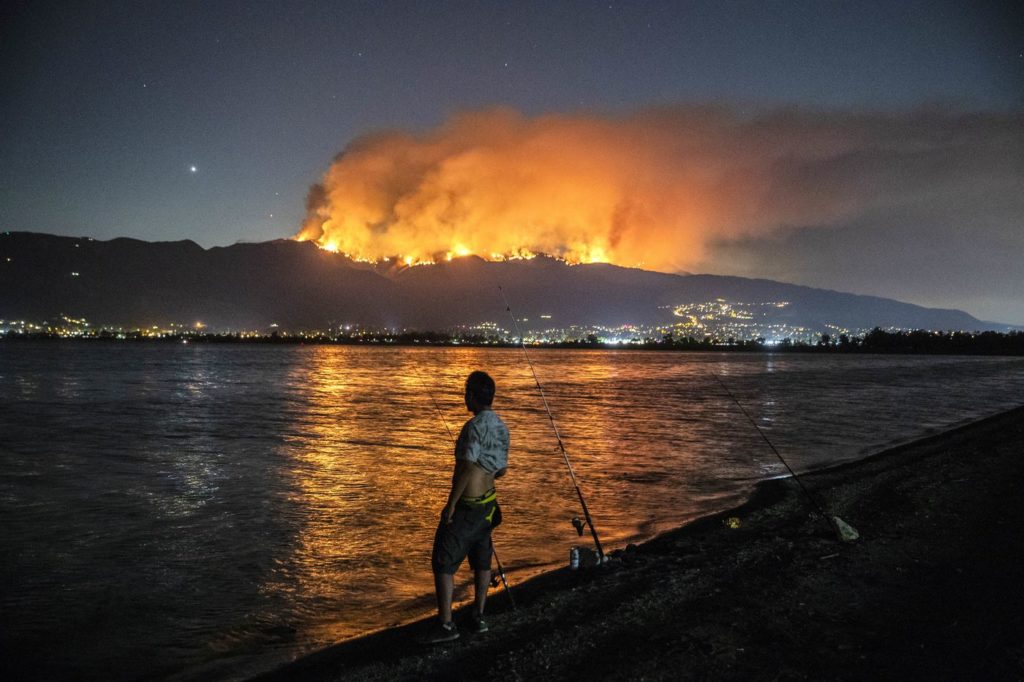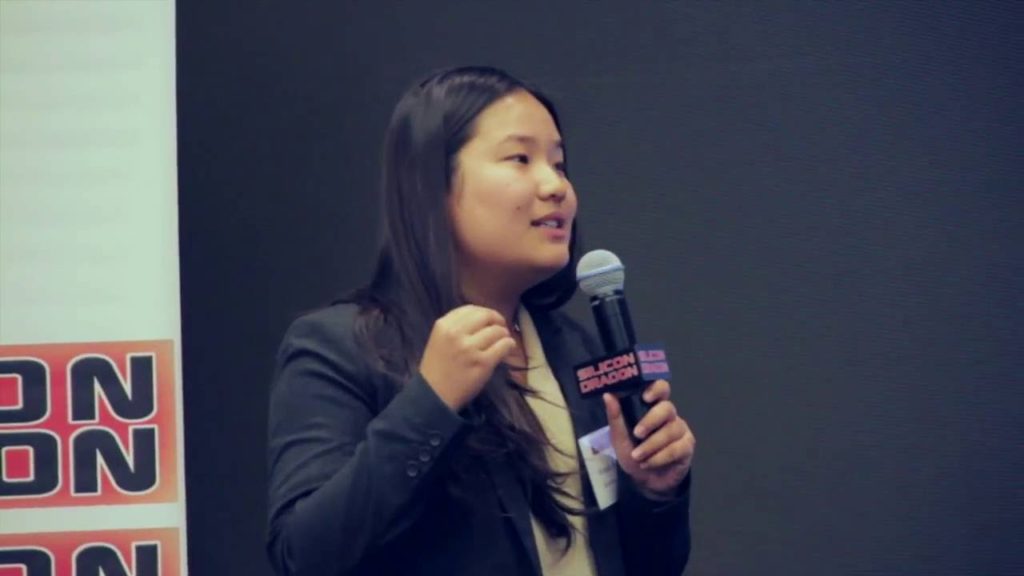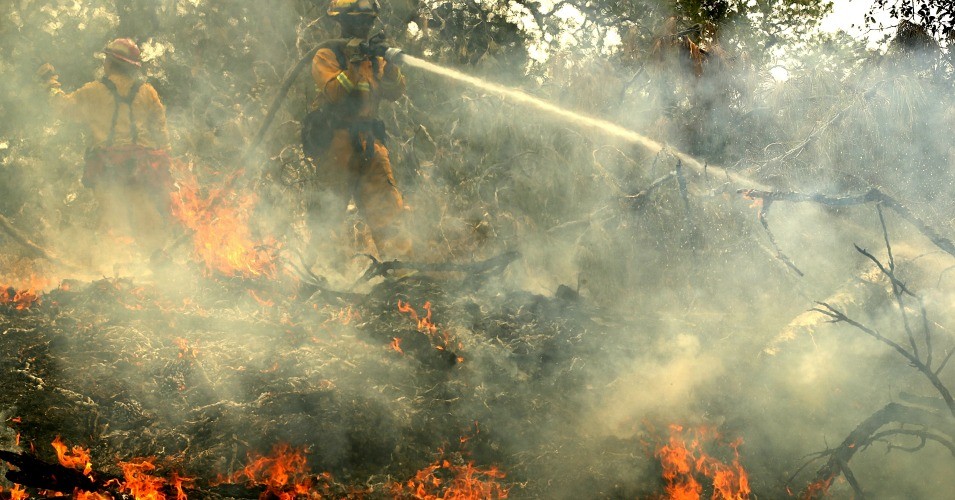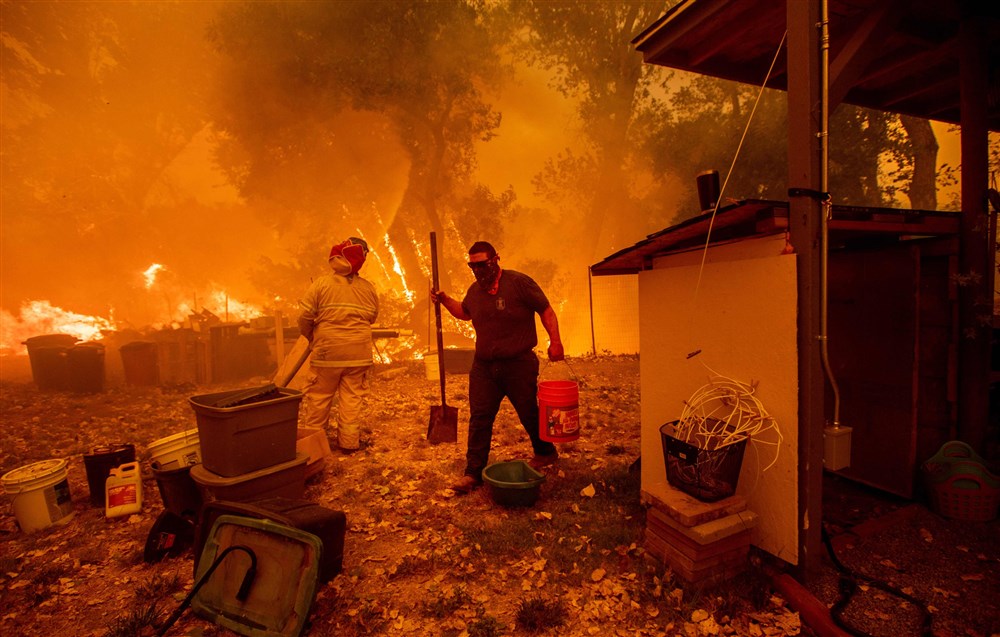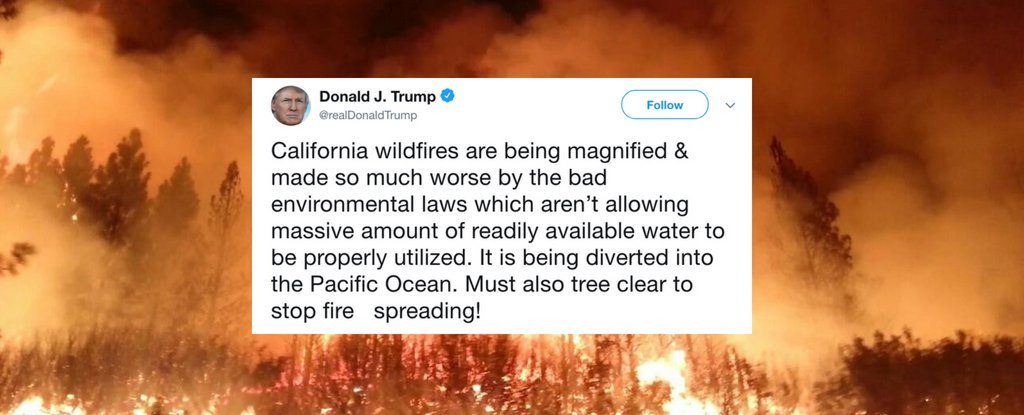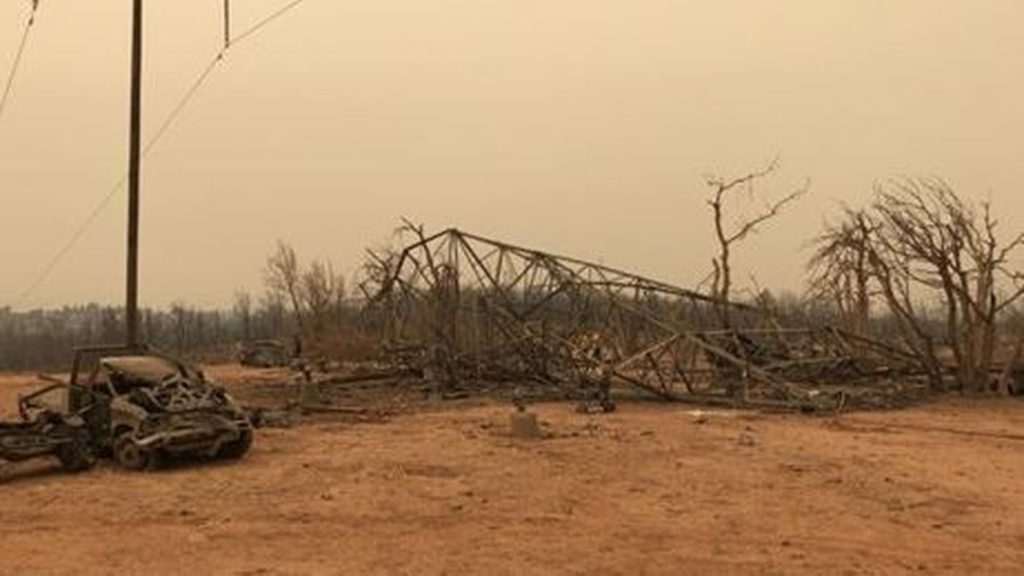IoES in the News
Headline
In California’s Lake County, fire is a tired new normal
Lake County in California is prone to lighting up in flames. The county has experienced a few wildfires in the last decade and the largest wildfire this year. “It’s sort of this middle elevation, where you’re above the marine layer, but you’re not high enough in the mountains to really cool down either,” UCLA climate scientist Daniel Swain said. Residents are seeing the trend and moving away before the next one hits.
Headline
How Do We Measure Future Snow Cover?
There are multiple ways to measure snow cover, including field monitoring, remote sensing, and hydrological modeling. UCLA's Chunyu Dong explains that the best way to measure is to combine all methods. Each method that their own hole in data, and together make a more complete and accurate picture.
Headline
Lowering Fuel Economy Standards Not As Easy As Trump Thought
Cara Horowitz, co-director of the Emmett Institute on Climate Change and the Environment at the UCLA School of Law, explained that the Trump administration "is going to have to justify to a court why it's changing its position because the rule was put in place after a robust administrative process and record. It's often harder to justify a changing of a position than the taking of a position because you have to overcome the presumption that the rule was right in the first place."
Headline
Trump CAFE proposal faces legal thicket
Trump administration's proposal is to freeze average fuel economy target at the 2020 level of 37 mpg. The government "is going to have to justify to a court why it's changing its position, because the rule was put in place after a robust administrative process and record" showed its benefits, said Cara Horowitz, co-director of the Emmett Institute on Climate Change and the Environment at the UCLA School of law.
Headline
Zinke takes forestry fight to fire-ravaged California
Interior Secretary Ryan Zinke looks to push active forest management in California. The push is coming at a time where California is burning with multiple wildfires and the House is trying to pass a farm bill that includes logging without environmental review. Environmentalists are fighting the idea of logging, however, Glen MacDonald a professor of geography at UCLA says that the argued benefits of logging are complicated and don’t always fall along party lines.
Headline
Steve Lopez: Ignore the climate change deniers. California’s hellish summer really is a grave warning
LA Times' Steve Lopez surveyed and found that many either deny that climate change is real or believe it is but not much can be done to change the circumstances. However, he believes this year's summer is the warning that people should be paying attention to. He includes UCLA's Alex Hall and ask can California have any impact on reversing climate change. Hall has no doubt, California is setting the pathway for change and adaptation.
Blog
Meet the 2018 Pritzker Award candidates: #16-20
By Sonia Aronson Our final group of candidates for this year’s Pritzker Award are taking on global challenges using tools ranging from public policy to sustainable new methods of recycling…
Headline
Orange County homeless couple’s journey, firefighting technology is changing, UCI cannabis research
Invasive crayfish in Santa Monica Mountains are putting us at risk of disease. Gary Bucciarelli joins A Martinez on KPCC's Take Two (35:57) to speak on the UCLA published research on the invasive crayfish – how they reached the SMM, hurting the area's ecosystem and food chain, and increasing mosquito communities.
Blog
Meet the 2018 Pritzker Award candidates: #11-15
By Sonia Aronson The next batch of candidates for the 2018 Pritzker Emerging Environmental Genius Award include environmental justice advocates and inventors finding ways to reduce stormwater runoff pollution and…
Headline
Worse Scorching Summers Loom If Global Warming Continues Unchecked
Summer 2018 has been the warmest in many countries' history and is the warning needed to take action against climate change. The explosive wildfires across the globe have devastated many communities. The high temperature and wildfires are closely linked to global warming, said Yifang Zhu, a professor of environmental health sciences at UCLA. The wildfires in western United States were predictable against the backdrop of the ongoing climate change.
Headline
Why are California’s wildfires so intense and what can be done?
We are experiencing one of the worst fire seasons in California history. Will things get better? “We’re having peak fire season conditions in the off-peak time of year, and there’s no real indication that things are going to get better before the peak of the season in the fall,” says Daniel Swain, a University of California, Los Angeles climate scientist and leading expert on climate whiplash.
Headline
‘Repugnant and Dangerous’: Ignoring Role of Climate Crisis, Trump Offers Buffoonery on California Wildfires
People are enraged by Trump's tweet about California's inability to fight fires due to environmental laws. He includes points that help his favored industries like logging and leaves out that it is due to climate crisis. UCLA's Alex Hall statement was featured to tell the reason for the big fire conditions.
Headline
Mendocino fire explodes to second-largest in California history
The Mendocino fire exploded and jumped up the ranks to number two largest fire in California history in just a few days. It formed from two fires, River and Ranch fires. UCLA's Daniel Swain said the destructive fires are due to both human made climate change and sprawling housing.
Headline
California wildfire racing at unprecedented speed into the record books
“This is a part of the state that I think that overnight temperatures have played an enormous role. It’s sort of this middle elevation where you’re above the marine layer but you’re not high enough in the mountains to really cool down either. So you’re sort of in this zone where fires can burn, with the increase in temperatures, as we’ve seen, all day and all night,” said UCLA's Daniel Swain about Mendocino fire's exponential growth.
Headline
Trump picks fight with California over wildfires
Trump tweets that California's environmental policies are to blame for the inability to put out the wildfires across the state. “Honestly, the way the state manages its water, that really has no bearing on the explosive growth of the fires,” said Glen MacDonald, a geography professor at UCLA who studies wildfires. “It just has nothing to do with anything.”
Headline
Experts reject Trump claim that California water policies hurt firefighting
Trump tweeted, calling out Governor Jerry Brown and claiming California's environmental policies is preventing the state from extinguishing the multiple wildfires. UCLA's Glen MacDonald, UC Merced climate scientists, and Cal Fire reject the President's claims. "I have other things to do," Scott McLean, Cal Fire official said, "like deal with the fires."
Headline
We Asked an Expert About Trump’s Baffling Wildfire Tweets. Here’s What They Had to Say
Trump claimed that California is diverting their water to the ocean rather than fighting fires. "I wouldn't say that that's true whatsoever," UCLA professor Glen MacDonald told Science AF on the phone. MacDonald added "that even if we had more water from the Sacramento or San Joaquin rivers to fight these wildfires, it wouldn't make any difference because a lack of water isn't the problem."
Headline
President Trump Claims California Doesn’t Have Water to Fight Wildfires. He’s Just Wrong, State Officials Say
Trump tweeted about the California wildfires – saying the state is allocating its waters to the ocean instead of putting out fires due to environmental law and needs to clear the trees. "I sort of had to suppress a chuckle when I read the President’s tweet,” says UCLA professor of geography and ecology, Glen MacDonald. He, Cal Fire, and UC Merced climate scientist explain why the President is wrong.
Headline
One Planet: How is climate change fueling California fires?
UCLA's Daniel Swain was featured KALW's Your Call episode. He goes into depth and answer callers' questions with Matihe Razazan and Kathie Dello on climate change, how climate change is driving wildfires and how wildfires are evolving to become more destructive.
Headline
California’s destructive summer brings blunt talk about climate change
California is experiencing record highs across the state, off the coast, and at night, and it's not going away. The sustained heat is providing fuel for the wildfires and making it difficult to fight. “We’re having peak fire season conditions in the off-peak time of year, and there’s no real indication that things are going to get better before the peak of the season in the fall,” UCLA climate scientist Daniel Swain said.
Headline
Evidence Found of CA Wildfire Vortex
UCLA climate scientist Daniel Swain describes the fire tornado and how it formed from Carr Fire in Redding, CA. He said that it is a very rare phenomenon and should not be a regular occurrence even with warmer and drier conditions.
Headline
A Rare And Deadly Phenomenon Tore Through California Last Week–Dubbed ‘Fire Tornado’
Carr Fire in Redding, CA became a fire tornado and devastated the area. UCLA climate scientist Daniel Swain adds a scientist's perspective to the Carr Fire fire tornado.
Headline
143-mph ‘fire tornado’ that cut a path of destruction is an ominous sign of the future
The Carr Fire reached an all time high with a 143 mph fire tornado, but it is not expected to be a part of the new normal. UCLA's Daniel Swain said, “This won’t be the primary risk associated with wildfire, ever. But under the right atmospheric conditions, all else being equal, the increasing intensity of fires themselves will play a role in producing these localized fire weather conditions that can be quite extreme.”
Headline
The “Fire Tornado” That Ripped Through A California City May Have Been The Strongest Ever Recorded
UCLA's Daniel Swain explains the fire tornado in Redding, CA. "It had the intensity of a regular old tornado but it had the formation mechanism of what you’d see on a large fire," he said. "It shared more characteristics with a traditional tornado than we’d expect to see."
Headline
Study links US demand for Chinese furniture to deforestation in Africa
Trevon Fuller, an ecologist at UCLA, linked deforestation in the Congo to the US market. Fuller followed the demand driving the deforestation and discovered that the wood is going to…





